Loimaa 作者: 来源: 发布时间:2021-10-13
一、所属省或是州,具体位置,人口,面积
Loimaa is a town and municipality of Finland. It is located in the province of Western Finland and is part of the Southwest Finland region. The municipality has a population of 16,018 (31 January 2019) and covers an area of 851.93 square kilometers (328.93 sq mi) of which 3.96 km2 (1.53 sq mi) is water. The population density is 18.89 inhabitants per square kilometer (48.9/sq mi). Loimaa's neighboring municipalities are Huittinen, Humppila, Koski Tl, Marttila, Oripää, Punkalaidun, Pöytyä, Somero, Säkylä and Ypäjä.
Loimaa (old Swedish Loimijoki) is a city located in Southwest Finland and the center of the Loimaa region. The municipality of Loimaa was merged with the then city of Loimaa on 1 January 2005, when the coat of arms of Loimaa became the coat of arms of the former municipality of Loimaa. Alastaro and Mellilä were annexed to Loimaa on 1 January 2009, when the city received its current borders. The forest land had been connected to the municipality of Loimaa as early as 1976. The neighboring municipalities of Loimaa are Huittinen, Humppila, Koski Tl, Marttila, Oripää, Punkalaidun, Pöytyä, Somero, Säkylä and Ypäjä.
In addition to Loimaa, the Loimaa region includes Aura, Koski Tl, Marttila, Oripää, and Pöytyä. Of these, Aura and Pöytyä are Turku's areas of employment [8], and Koski's and Marttila's relationship with Loimaa is also more administrative than operational. Loimaa is more strongly influenced by Oripää and its eastern neighbor Ypäjä, which belongs to the province of Kanta-Häme and the Forssa region.
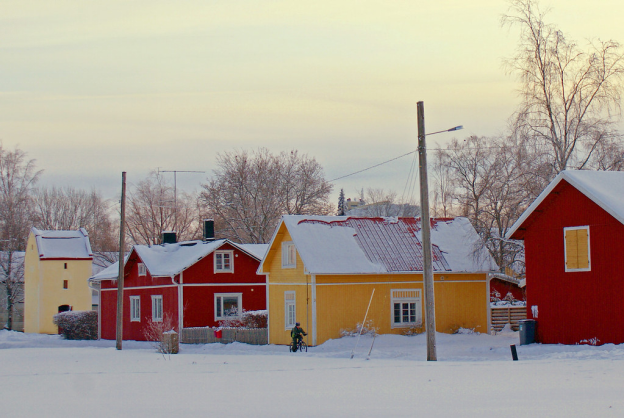
二、自然地理
1.地理条件
The landscapes in Loimaa are largely clay plains, much of which has been cleared into fields. The variation is brought about by clay-ditched river ditches, rocky moraine hills and in some places swamps, which include the border of Eksyssuo Koski, Somero and Ypäjä, as well as two ridge sections. One of these follows the Loimaa borders in the west and the other in the north, in the area of the former municipality of Metsämaa, where the surface forms are slightly more varied. Here, Highway 2 runs along a ridge for about 15 kilometers between Humppila Russia and Loimaa's Leppijärvi. Along the main road 41 in the western part of Alastaro, the landscape is dominated by the Virttaankangas ridge area related to the ridge section extending from Koski and Mellilä to Säkylä.
The Loimijoki River, which originates in Tammela and flows into the Kokemäenjoki River in Huittinen, flows through the center of Loimaa, Hirvikoski and Alastaro, and its water is brown due to the clay soils of the area. At Alastaro, the Kojonjoki, the largest tributary of the Loimijoki River, which flows through the northern parts of Loimaa and the church village of Metsämaa, flows from Koors Lake in Forssa. From the south, the Niinijoki River, which originates in Mellilä, flows into the Loimijoki River in Alastaro, and the Petäjoki River, which originates in the village of Joenperä in Loimaa near Hirvikoski. There are only a few lakes, mostly on the outskirts of the ridges.
The landscapes in Loimaa are largely clay plains, much of which has been cleared into fields. The variation is brought about by clay-ditched river ditches, rocky moraine hills and in some places swamps, which include the border of Eksyssuo Koski, Somero and Ypäjä, as well as two ridge sections. One of these follows the Loimaa borders in the west and the other in the north, in the area of the former municipality of Metsämaa, where the surface forms are slightly more varied. Here, Highway 2 runs along a ridge for about 15 kilometers between Humppila Russia and Loimaa's Leppijärvi. along the main road 41 in the western part of Alastaro, the landscape is dominated by the Virttaankangas ridge area related to the ridge section extending from Koski and Mellilä to Säkylä.
2. 交通情况
The main road is the national 9 (E63) coming from Turku (65 km) and continuing towards Tampere (92 km).
There are four nationally significant built cultural environments in the Loimaa region: Huovintie, Loimaa railway station, Kanta-Loimaa church and rectory, and the Vesikoski historic factory area.
三、经济发展和规模
When the Turku – Toijala railway was completed in 1876, it gave a boost to the entire Loimaa region. The railway brought with it new economic activity that pushed the development of the industry to the beginning. A railway station was built on Loimaa as soon as the track was completed, and by the beginning of the 20th century the current city center grew around it. The Loimaa station area was separated into its own city in 1921 and it received city rights in 1969. At the same time, the current Highway 9 was completed. Highway 2 ran through the center of Loimaa before the completion of its current policy.
四、产业特点/重点项目
Loimaa subregion (37 000 inhabitants) is the most agricultural of Southwest Finland’s subregions. In the manufacturing production metal industry plays an important part. The development of business areas, tourism services and residential areas by the main traffic routes is a priority. Machine technology, metal, tree and construction industry, agribusiness (agriculture and game house holding, production of food and drink), and welfare are important.
五、风景名胜,景点( attractions)
1. Sarka – The Finnish Museum of Agriculture
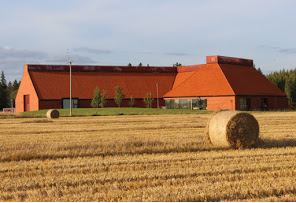
Sarka is an agricultural museum located in Loimaa, Southwest Finland. The name of the museum comes from a Finnish word meaning a strip of field. The first discussion on the need for a local museum of agriculture started as early as in the 1940s. The Finnish Ministry of Education took the museum under its wing in the 1985 and in 2003 the official decision was made. Sarka revolves around the history of the agriculture in Finland and the museum presents 3000 years of history. The two main exhibitions are called The Age of Agriculture and Before Machines. Additionally there's an exhibition called Powered by Machines. Since 2019 the director of the museum has been Sami Louekari as the previous director retired. Aside from the museum there's also restaurant that serves lunch and à la carte.
2. Kanta-Loimaa Church
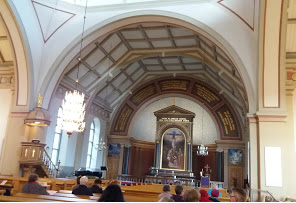
The Church of Loimaa Proper (Finnish: Kanta-Loimaan kirkko) is a church located in the municipality of Loimaa, Finland. It serves as the main church for the parish of Loimaa and is a visible landmark in the middle of countryside. Today the church is regarded as a protected site by the Finnish Heritage Agency.
A parish was founded in Loimaa somewhere around 1420's.The church was built to its current location in 1837 and is designed by the Italian-born Carlo Bassi. The location was moved due to lack of space. Previously on the spot of the church there was a secret site for the pre-Christian pagans whose so called sacrificial stone is still visible at the church's front yard. In 1888 the church was destroyed in a fire started by a lightning. Most of the movables, including the altarpiece, was saved. The church was rebuilt in 1892 and the architect Josef Stenbäck followed Bassi's blueprints to the best of his abilities. According to legend, a local fortune teller, Prättäkitti, foresaw the fire some 200 years before it happened.
3. Alpo Jaakola Sculpture Park
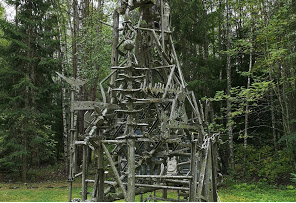
Jaakola´s sculptures are molded of many diverse materials and they are scattered in the area. The buildings made by the artist in the area are also the result of the artist´s persistent and longtime creative activity. Sculptures and buildings are all independent works of art, albeit together forming a unique entity. The most recent creations amongst the forty sculptures in the Park date from the 1990´s.
Jaakola moved into the area in 1953 after completing the forest cottage made of borrowed planks of wood. The other infrastructure in the park was built mainly in the 1960´s and 70´s. The main atelier house was built in 1964-65. An old autopsy room, transported from Hirvikoski in 1968, served as sculpting space.
Professor Alpo Jaakola moved from the Statuary Park into his new artist´s home Torkville, in the village of Niinijoki, in 1979. After that the Statuary Park was unused and uninhabited for a long time, and Nature has left Her own mark on the sculptures. This, undoubtedly, was the artist´s intention also.
六、历史文化
1.历史
First mentions of Loimaa come from the year 1439 but a parish was founded in the area already a decade earlier. The town was founded in its current form in 1876 as the railway between Turku and Toijala was completed. A legend of Prättäkitti is heavily associated with Loimaa. The town of Loimaa merged with Loimaan kunta (literally "Municipality of Loimaa") on January 1, 2005 and with the municipalities of Alastaro and Mellilä on January 1, 2009. The name Loimaa comes from the river Loimijoki which flows through the town.
At the latest, the railway connected Loimaa, which historically belonged to Satakunta, even more to the sphere of influence of Turku, so that Loimaa is already a well-established part of Southwest Finland in the current division of Finland. It may be impossible to determine exactly when Loimaa has "moved" provincially from Satakunta to Southwest Finland. For example, the New Encyclopedia published in the 1960s mentions somewhat contradictoryly that the (then) Loimaa township belongs to Lower Satakunta, but the (then) Loimaa rural municipality instead belongs to Southwest Finland.
In the same work, Loimijoki is mentioned as the Swedish name for Loimaa. The name is based on the river of the same name flowing in the Loimaa region. Today, however, Loimaa no longer has an official name in Swedish.
population trends
The following graph shows the demographic development of the city every five years since 1980. The regional division used is in accordance with the situation on 1 January 2017, ie the figures also include the municipality of Loimaa, Alastaro and Mellilä, which are connected to Loimaa.
2. 文化
A local speciality is piapo, a version of kama. Rompepäivät (lit. "junk days") is an annual event that takes place in August. It brings together trunk show enthusiasts selling both old and new merchandise as well as food and entertainment. The trunk show is located at the historic market square of Loimaa, now known as Peltoinen, and draws in 8,000–10,000 visitors. The local newspaper is called Loimaan Lehti. It first started publishing in 1915 and today comes out three times a week: Tuesdays, Thursdays and Saturdays.
The city is home to the Bisons Loimaa basketball club, 2012 and 2013 Champion of the Korisliiga. The club regularly qualifies for international competitions. It plays its home games at the Loimaa Sports Center and on some occasion’s moves to the Energia Areena. The city is also home to the Hurrikaani Loimaa volleyball club, regularly qualifies for international competitions such as CLvolleyM and SM-league.
七、其他信息
Alastaron-Mäenpää, Eura, Haara, Haaroinen, Haitula, Hartoinen, Hattula, Hirvikoski, Hurskala, Ilmarinen, Inkilä, Joenperä, Juva, Karhula, Karsattila, Kauhanoja, Kemppilä, Kesärlä, Klockarla, Koenperä, Kojonkulma, Krekilä, Kuninkainen, Kurittula, Kuttila, Köyliö, Lappijoki, Levälä, Lähde, Metsämaa, Mäenpää, Niemi, Niinijoki, Onkijoki, Pahikainen, Pappinen, Peltoinen, Piltola, Puujalkala, Raikkola, Seppälä, Sieppala, Torkkala, Vesikoski, and Vilvainen.
The following list mentions the parishes that were abolished in historical time in the present area of the city of Loimaa:
Alastaron seurakunta (liitetty Loimaan seurakuntaan 2009)
Kanta-Loimaan seurakunta (yhdistetty Loimaan kaupunkiseurakunnan kanssa Loimaan seurakunnaksi 2005)
Loimaan kaupunkiseurakunta (yhdistetty Kanta-Loimaan seurakunnan kanssa Loimaan seurakunnaksi 2005)
Mellilän seurakunta (liitetty Loimaan seurakuntaan 2009)
Metsämaan seurakunta (liitetty Kanta-Loimaan seurakuntaan 2000)
The Loimijoki River, which originates in Tammela and flows into the Kokemäenjoki River in Huittinen, flows through the center of Loimaa, Hirvikoski and Alastaro, and its water is brown due to the clay soils of the area. At Alastaro, the Kojonjoki, the largest tributary of the Loimijoki River, which flows through the northern parts of Loimaa and the church village of Metsämaa, flows from Koors Lake in Forssa. From the south, the Niinijoki River, which originates in Mellilä, flows into the Loimijoki River in Alastaro, and the Petäjoki River, which originates in the village of Joenperä in Loimaa near Hirvikoski. There are only a few lakes, mostly on the outskirts of the ridges.
八、联系方式
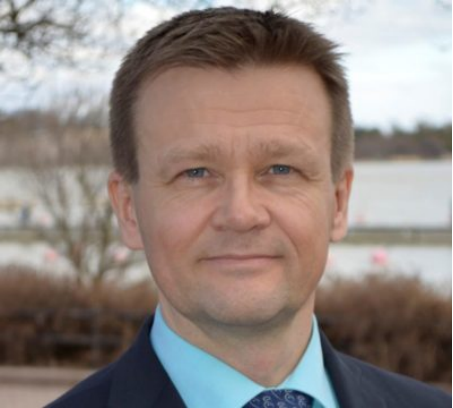
Mayor of Loimaa city: Jari Rantala
Website: https://www.loimaa.fi/
Phone number: 02 76 110
Address: Loimaan kaupunki, Ylistaronkatu 36, PL 9, 32201 LOIMAA
Email: kirjaamo@loimaa.fi
Facebook: @loimaankaupunki
